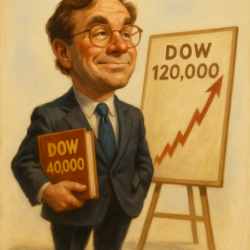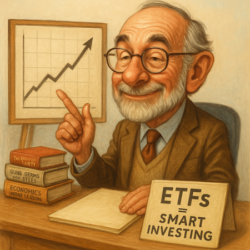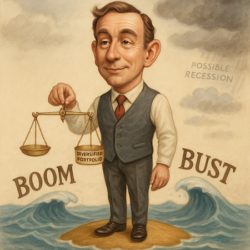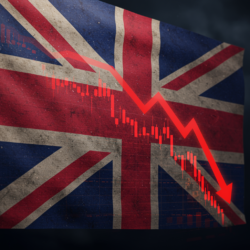Publisher’s Note: No one wants to be reminded of the pandemic. Over-zealous governments abusing their citizens based not on what they said was ‘science’, but which in many cases turned out to be a lust for control.
Saying that, colleague Sam Volkering says that now is actually a time when we should revisit it… not as an excuse to point the finger at governments and bureaucrats, but as a means to consider the measures you could take for the next event.
Thinking of it from a financial viewpoint may come across as bad taste. But that’s not the intention. It’s about making sure you have all the information possible so you can make your own decision on things… something governments rarely like for their citizenry.
I’ll admit, today’s essay is somewhat of a departure from my usual optimistically positive look at tech, AI, crypto and the biggest opportunities that exist in the market.
But hey, a touch of doom and gloom is good for us all…right?
Well, I’m not that much of a “doomer” so considering what you’ll read today, I’m looking to the positive outcomes, as in who fixes the problem when the next pandemic hits – that’s far closer than you might think.
Normally I’d say, this threat isn’t as big a risk as it might seem, but having seen how governments reacted in 2020, well, anything is on the cards now.
And I should admit up top, the pandemic I’m talking about today isn’t metaphoric.
I’m talking another virus that could be a threat to life, and there’s just a handful of companies that hold the vaccine (quite literally) that could protect us all.
Note: this also isn’t some political takedown, or soap-box rant about vaccines. This is staring at a threat, assessing the risks, and understanding what companies are at the forefront of the solution.
A slow-moving threat with fast-moving implications
First off, this next pandemic threat isn’t Covid. It’s a virus that’s been around a long time, and certainly not (at least to the best of my knowledge) bioengineered in a lab.
It’s commonly known as the “bird flu” or “avian flu” or the H5N1 virus.
It’s been killing birds for decades. So, as my former publisher, Paolo Cabrelli, would say, “that’s a bird problem, not a human one.”
And he’d be right…until recently.
In the last 18 months, H5N1 has begun infecting mammals in growing numbers. Foxes. Seals. Cats. Even cows.
Back in March 2024 the virus was detected in US dairy herds for the first time. Then, in April, a human case was confirmed in Texas, a dairy worker exposed to infected cattle.
Symptoms were mild, but the story here is not. This was a virus crossing more species barriers than ever before, and significantly, into humans. And that’s enough for us to start to take a bit more notice of what’s going on here.
The headlines are also now starting to shift too. What was once relegated to the back pages of virology journals is now creeping into the mainstream. In fact, you’ll probably see it today all over the news thanks to the release of a viewpoint paper on Monday by a bunch of virologists in The Lancet Regional Health – Americas edition.
As the summary explicitly states,
The recent emergence of highly pathogenic H5N1 avian influenza virus infections in dairy cows and humans in the U.S. has raised alarms regarding the potential for a pandemic.
Their primary concern is that the virus “acquires mutations,” in mammals increasing, “…their ability to transmit and replicate efficiently in mammals, eventually including humans.”
They do note this hasn’t been demonstrated yet. But there’s sufficient concern that it will.
They go on to list 11 points to prepare for and prevent widespread outbreak. Two of those being, 7. Rapid Vaccine Development, and 8. Preparedness plan for roll-out of vaccines and therapeutics.
Now, if this does become a “human problem” then you’ve got to ask, who, or what companies are there to provide the vaccines? Who is developing H5N1 vaccines to ensure safety of humans if the need arises?
And that’s what we’re looking at below. Because I’ve had this lingering feeling in the back of my mind for a few months now that H5N1 is going to get worse before it gets better.
While I don’t necessarily think Covid-era style lockdowns are imminent, dare I say you should be prepared, nonetheless…anything’s possible.
It also means there’s likely to be a handful of stocks that skyrocket in price if things get bad. Like we saw with Moderna and Pfizer the potential to see stocks double, triple…or 10x is real.
It’s not an outcome we want, but if you believe in preparing for doom – then check out these stocks.
Three stocks preparing for H5N1
- CSL Ltd (ASX:CSL)
CSL is an Aussie pharma giant. An AU$120-billion-dollar heavyweight that has been producing flu vaccines for decades through its Seqirus arm.
And they’re probably the most advanced H5N1 vaccine maker in the world. CSL already has two H5N1 vaccines: AUDENZ (also known as CELLDEMIC), and AFLUNOV (previously FOCLIVIA). One is cell-based, the other is egg-based. Both are built with a potent adjuvant called MF59 which supercharges the immune response. And both are pandemic-ready.
In fact, the US and UK governments already buys from CSL. In June 2024, it was reported the US government had already ordered 4.8 million vials of H5N1 vaccines from CSL and the UK, 5 million.
A real outbreak could see those numbers exponentially increase, and possibly CSL’s stock price.
- Arcturus Therapeutics (NASDAQ:ARCT)
Arcturus is by no means a household name. But during Covid, it was one of the many mRNA challengers racing behind Moderna and BioNTech. Today, it’s worth around US$340 million, tiny compared to CSL, but potentially more explosive.
Why? Because Arcturus is pioneering a different kind of mRNA vaccine they call self-amplifying mRNA, or sa-mRNA. The idea is simple but powerful: you need less of it to get a strong immune response, which could mean lower doses, cheaper production, and faster scaling.
Their H5N1 candidate, ARCT-2304, just entered Phase 1 trials in November 2024. And on 10 April this year, it received Fast Track Designation from the FDA designed to speed up the entire approval process if the threat escalates.
What’s interesting about their H5N1 and mRNA vaccine development is that it’s in partnership with CSL.
This is your asymmetric bet. If Arcturus’ tech works and H5N1 starts spreading it very quickly becomes that small-cap to large-cap story.
- CureVac (NASDAQ:CVAC)
CureVac, is German mRNA player that missed the Covid vaccine boom, but is still developing a pipeline of vaccines and pharma products. After a bruising few years (including a failed first-generation vaccine) its H5N1 program, in partnership with GlaxoSmithKline, looks more promising.
Together, they’re testing a second-generation H5N1 mRNA vaccine, with Phase 1/2 trials already underway since April 2024.
CureVac’s market cap sits at $794 million, but with GSK behind them, the path to manufacturing and distribution for a H5N1 vaccine could quickly escalate. That’s also helped with Fast Track Designation from the FDA.
They have the IP. They have the facilities. They have big pharma backing on this one. And they have a fast-track path to production from the FDA if needed.
Should you really worry?
We don’t know yet if H5N1 will become the next Covid. We do know that it’s riskier to children than Covid ever was.
And the most likely outcome is that it remains a lingering threat. A threat that’s dangerous enough to justify investment consideration, but not necessarily dangerous enough yet to really smash the buy button.
But then again that’s how all pandemics start. Slowly. Then all at once.
Governments are already moving. The UK ordered 5 million H5N1 vaccine doses late last year (from CSL too). The US is monitoring dairy cattle and sequencing viral samples daily. And biotech firms are scrambling to be first in line when the next stockpiling surge hits.
For investors, this isn’t about fear, but about preparation.
These three are certainly stocks to think about: CSL a legacy stalwart of the pharma market with H5N1 up its sleeve and decades worth of other product development. Arcturus and CureVac, far higher risk, far more developmental, but also far more likely to rocket if H5N1 breaks out.
I just can’t shake the feeling this is a topic that’s going to get more coverage, generate more fear and maybe see these companies soar.
Until next time,

Sam Volkering
Contributing Editor, Investor’s Daily
P.S. My colleague Jim Rickards has been tracking a different kind of contagion—one that’s quietly infecting the financial system. In his latest research, American Birthright, he reveals how an estimated $150 trillion “hidden endowment” could reshape the economy—and why most people will never see a dime of it. If you’re interested in the deeper structural shifts behind markets (and how to position ahead of them), it’s worth a look. Click here to see Jim’s full analysis.
Stinkballs
Bill Bonner, from the ranch at Gualfin, Argentina
Getting back into the rhythm of ranch life, we spent part of yesterday vaccinating calves. The law requires vaccinations against diseases which, thanks to its high and remote position, are not present in the valley.
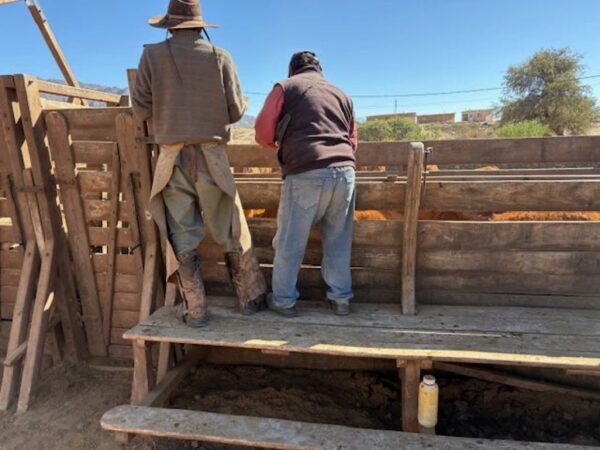
Like so much else at the ranch, many hands are required. Seven of us worked on the ‘manga’ — the cattle chute — yesterday. Alas, the Milei revolution has made those hands much more expensive — in both local and dollar terms. The peso has been going up against the dollar, making a day’s wage more than twice what it was a couple of years ago. From about $8 a day in 2023 when we were last here, each cowboy now costs around $18 per day.
But at least, they are good, hard workers.
Back in the USA…
Back when Marco Rubio thought he might be president, he foresaw a future that has not yet happened:
“For years to come, there are many people on the right, in the media and voters at large, that are going to be having to explain and justify how they fell into this trap of supporting Donald Trump.”
And now it’s ‘Lil Marco’ who will have some ‘splaining to do. This is what he said about Donald Trump before he sold out:
“He runs on this idea that he is fighting for the little guy. But he has spent his entire career sticking it to the little guy…If you all have friends who are thinking about voting for Donald Trump, friends do not let friends vote for con artists.”
One day, a Ph.D. candidate will focus his thesis on how rapidly two legged leopards are able to change their spots. And how do proud and intelligent people sit through a White House cabinet meeting and still hold their heads up? Consider the poor Secretary of State. Now that he’s joined the White House team he has nothing but praise for the con artist:
“You know in time, you grow to appreciate how Trump gave voice to that sentiment that needed to be heard and that needed to transform our party.”
“Thank you @POTUS for standing up for America in a way that no President has ever had the courage to do before. Thank you for putting America First. America is with you!”
Yesterday, we began looking at the way Big Man leaders are able to get the flunkies, yes-monkeys, and suck-ups to go along with them…even when their policies are disastrous to almost everyone.
We shiver to think of it. Dear Readers may shiver too…as they consider Stalin’s show trials and gulags. As cruel and pointless as they were, ‘the people’ went along. And Mao’s crazy ‘cultural revolution’…its chaos, starvation, and ‘struggle sessions’ left 50 million dead.
Again, hardly any organized opposition appeared. And even with the stench of so many cadavers still fresh in the Far East air, along came Pol Pot to rehearse an even deadlier version of the cultural revolution in Cambodia. The ideas were crackpot. The leaders were bloodthirsty ideologues. But the new Marxist elite…and the peasants… submitted, even as their friends and family died. Before it was over approximately one out of every three men in the country was dead.
And what about the Covid lockdowns? Barely one month into the pandemic and it was obvious that there was nothing to be gained from stopping people from working. People of working age rarely died from the ailment…and those who were vulnerable could easily stay home.
And yet…critics were accused of ‘mass murder.’ Doubters kept their own counsel. People went along (partly under the influence of generous ‘stimmies’ and loans that didn’t need to be repaid). And the lockdowns cost the US an estimated $16 trillion.
The history of Big Man government is rarely marked by grace or success. And it may be that when normal people let other people make important decisions for them, the decision makers are almost always grifters or imbeciles.
The Big Man has little trouble finding his lieutenants. One of the most remarkable turnabouts in the history of fickle suck-up-ism…came about in the USA recently, as Lil’ Marco and other leading Republicans joined the MAGA crowd.
Here’s another example: Lindsey Graham. The Atlantic:
Short and pudgy… [in school] they nicknamed him “Stinkball.” He always gravitated to custodial, larger-than-life figures, or “alpha dogs,” as he called them.
Graham had been a fierce ‘never Trumper.’ He said Trump was a “complete idiot” who was a “xenophobic, race-baiting, religious bigot.” It would be a “total disaster” if he were elected, he predicted.
But Trump was elected. Twice. And now, says Graham, Trump is “doing a really good job on multiple fronts…I’ve determined we really can’t grow without him.”
Of course, the leading stinkballs — Graham, Rubio, Cruz, Musk, etc — have something obvious to gain…power. Trump has it. They want some of it. And they’re willing to trade whatever trace of dignity or independent judgement they once had for a bit of it.
But what of the rank and file…the water-carriers and hewers of wood in Congress? Why do they so readily toss off their traditional values — like cockroaches climbing out of their carapaces, revealing even more hideous insects?
Rather than risk being out-of-step with the Big Man, by sticking to principles, good taste or traditional good sense, the creepy crawlers sweat, as Graham put it, to remain “relevant.”
What does that mean in a late, degenerate empire? What disaster does it portend?
Stay tuned.
Regards,

Bill Bonner
Contributing Editor, Investor’s Daily
For more from Bill Bonner, visit www.bonnerprivateresearch.com

